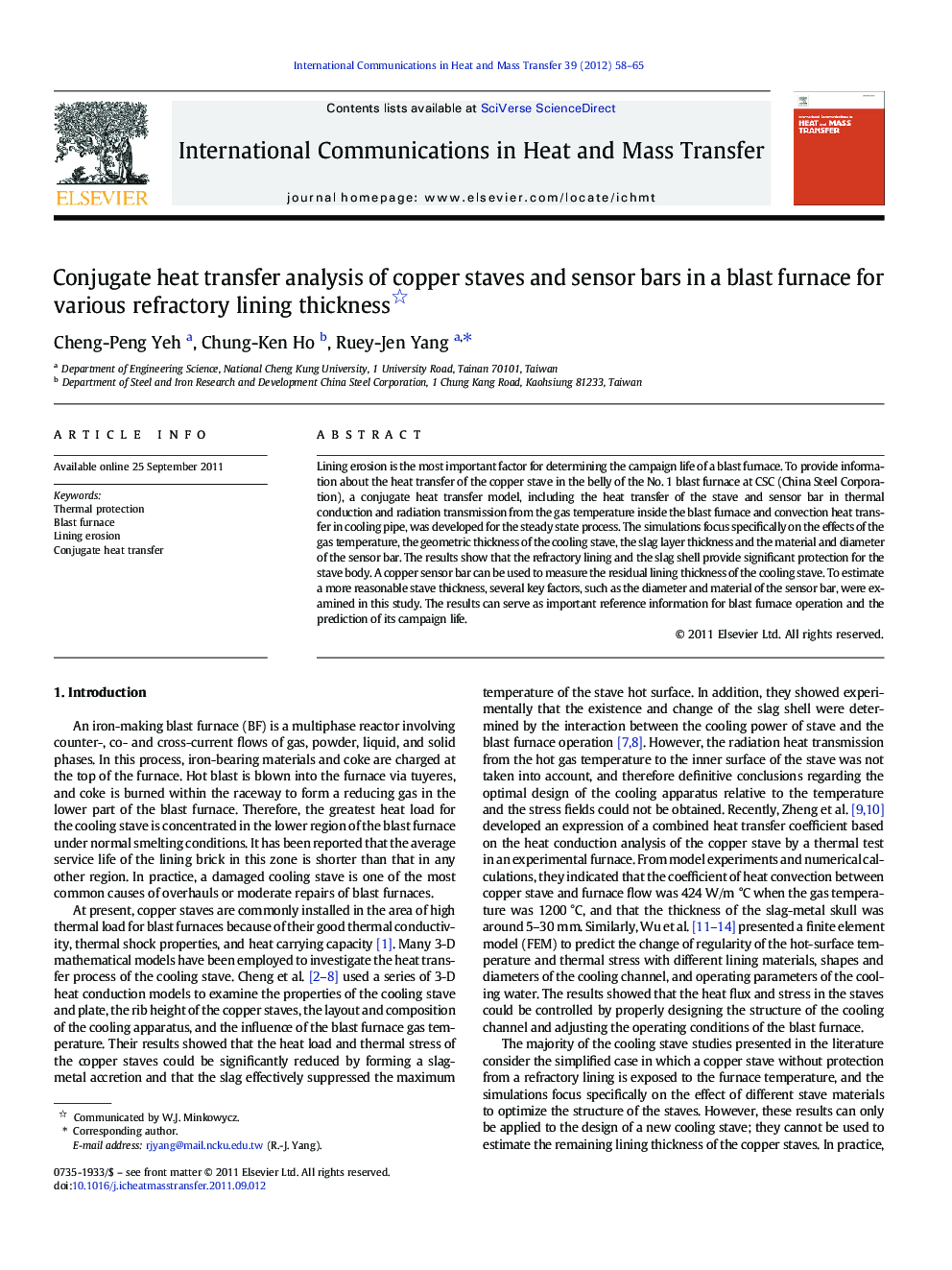| Article ID | Journal | Published Year | Pages | File Type |
|---|---|---|---|---|
| 653813 | International Communications in Heat and Mass Transfer | 2012 | 8 Pages |
Lining erosion is the most important factor for determining the campaign life of a blast furnace. To provide information about the heat transfer of the copper stave in the belly of the No. 1 blast furnace at CSC (China Steel Corporation), a conjugate heat transfer model, including the heat transfer of the stave and sensor bar in thermal conduction and radiation transmission from the gas temperature inside the blast furnace and convection heat transfer in cooling pipe, was developed for the steady state process. The simulations focus specifically on the effects of the gas temperature, the geometric thickness of the cooling stave, the slag layer thickness and the material and diameter of the sensor bar. The results show that the refractory lining and the slag shell provide significant protection for the stave body. A copper sensor bar can be used to measure the residual lining thickness of the cooling stave. To estimate a more reasonable stave thickness, several key factors, such as the diameter and material of the sensor bar, were examined in this study. The results can serve as important reference information for blast furnace operation and the prediction of its campaign life.
